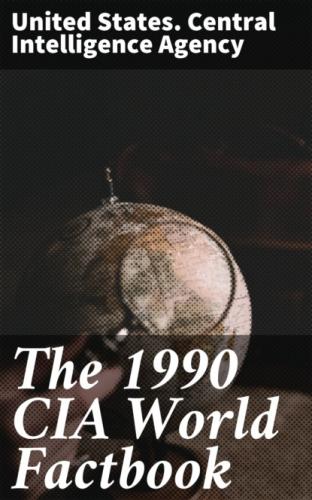Industrial production: growth rate - 12.4% (1988 est.)
Electricity: 353,000 kW capacity; 2,000 million kWh produced, 1,300 kWh per capita (1989)
Industries: cement, chemical products, mining, distilling, food processing, handicrafts
Agriculture: accounts for 50% of GDP; based on subsistence farming and animal husbandry; self-sufficient in food except for foodgrains; other production—rice, corn, root crops, citrus fruit, dairy, and eggs
Aid: Western (non-US) countries, ODA and OOF bilateral commitments (1970–87), $85.8 million; OPEC bilateral aid (1979–89), $11 million
Currency: ngultrum (plural—ngultrum); 1 ngultrum (Nu) = 100 chetrum; note—Indian currency is also legal tender
Exchange rates: ngultrum (Nu) per US$1—16.965 (January 1990), 16.226 (1989), 13.917 (1988), 12.962 (1987), 12.611 (1986), 12.369 (1985); note—the Bhutanese ngultrum is at par with the Indian rupee
Fiscal year: 1 July-30 June
- Communications Highways: 1,304 km total; 418 km surfaced, 515 km improved, 371 km unimproved earth
Civil air: 1 jet, 2 prop
Airports: 2 total, 2 usable; 1 with permanent-surface runways; none with runways over 2,439 m; 2 with runways 1,220–2,439 m
Telecommunications: inadequate; 1,890 telephones (1985); 15,000 radio receivers (1987 est.); 85 TV sets (1985); stations—20 AM, no FM, no TV
- Defense Forces
Branches: Royal Bhutan Army
Military manpower: males 15–49, 389,142; 208,231 fit for military service; 17,203 reach military age (18) annually
Defense expenditures: NA
——————————————————————————
Country: Bolivia
- Geography
Total area: 1,098,580 km2; land area: 1,084,390 km2
Comparative area: slightly less than three times the size of Montana
Land boundaries: 6,743 km total; Argentina 832 km, Brazil 3,400 km, Chile 861 km, Paraguay 750 km, Peru 900 km
Coastline: none—landlocked
Maritime claims: none—landlocked
Disputes: has wanted a sovereign corridor to the South Pacific Ocean since the Atacama area was lost to Chile in 1884; dispute with Chile over Rio Lauca water rights
Climate: varies with altitude; humid and tropical to cold and semiarid
Terrain: high plateau, hills, lowland plains
Natural resources: tin, natural gas, crude oil, zinc, tungsten, antimony, silver, iron ore, lead, gold, timber
Land use: 3% arable land; NEGL% permanent crops; 25% meadows and pastures; 52% forest and woodland; 20% other; includes NEGL% irrigated
Environment: cold, thin air of high plateau is obstacle to efficient fuel combustion; overgrazing; soil erosion; desertification
Note: landlocked; shares control of Lago Titicaca, world's highest navigable lake, with Peru
- People
Population: 6,706,854 (July 1990), growth rate 2.1% (1990)
Birth rate: 35 births/1,000 population (1990)
Death rate: 13 deaths/1,000 population (1990)
Net migration rate: - 1 migrant/1,000 population (1990)
Infant mortality rate: 125 deaths/1,000 live births (1990)
Life expectancy at birth: 52 years male, 56 years female (1990)
Total fertility rate: 4.7 children born/woman (1990)
Nationality: noun—Bolivian(s); adjective Bolivian
Ethnic divisions: 30% Quechua, 25% Aymara, 25–30% mixed, 5–15% European
Religion: 95% Roman Catholic; active Protestant minority, especially
Evangelical Methodist
Language: Spanish, Quechua, and Aymara (all official)
Literacy: 63%
Labor force: 1,700,000; 50% agriculture, 26% services and utilities, 10% manufacturing, 4% mining, 10% other (1983)
Organized labor: 150,000–200,000, concentrated in mining, industry, construction, and transportation; mostly organized under Bolivian Workers' Central (COB) labor federation
- Government
Long-form name: Republic of Bolivia
Type: republic
Capital: La Paz (seat of government); Sucre (legal capital and seat of judiciary)
Administrative divisions: 9 departments (departamentos, singular—departamento); Chuquisaca, Cochabamba, El Beni, La Paz, Oruro, Pando, Potosi, Santa Cruz, Tarija
Independence: 6 August 1825 (from Spain)
Constitution: 2 February 1967
Legal system: based on Spanish law and Code Napoleon; has not accepted compulsory ICJ jurisdiction
National holiday: Independence Day, 6 August (1825)
Executive branch: president, vice president, Cabinet
Legislative branch: bicameral National Congress (Congreso Nacional) consists of an upper chamber or Senate (Senado) and a lower chamber or Chamber of Deputies (Camara de Diputados)
Judicial branch: Supreme Court (Corte Suprema)
Leaders: Chief of State and Head of Government—President Jaime PAZ Zamora (since 6 August 1989); Vice President Luis OSSIO Sanjines (since 6 August 1989)
Political parties and leaders: Movement of the Revolutionary Left (MIR), Jaime Paz Zamora; Nationalist Democratic Action (ADN), Hugo Banzer Suarez; Nationalist Revolutionary Movement (MNR), Gonzalo Sanchez de Lozada; United Left (IU), coalition of leftist parties which includes Free Bolivia Movement (MBL), led by Antonio Aranibar, Patriotic National Convergency Axis (EJE-P) led by Walter Delgadillo, and Bolivian Communist Party (PCB) led by Humberto Ramirez; Conscience of the Fatherland (CONDEPA), Carlos Palenque Aviles; Revolutionary Vanguard-9th of April (VR-9), Carlos Serrate Reich
Suffrage: universal and compulsory at age 18 (married) or 21 (single)
Elections: President—last held 7 May 1989 (next to be held May 1993); results—Gonzalo Sanchez de Lozada (MNR) 23%, Hugo Banzer Suarez (ADN) 22%, Jaime Paz Zamora (MIR) 19%; no candidate received a majority of the popular vote; Jaime Paz Zamora (MIR) formed a coalition with Hugo Banzer (ADN); with ADN support Paz Zamora won the congressional runoff election on 4 August and was inaugurated on 6 August;
Senate—last held 7 May 1989 (next to be held May 1993); results—percent of vote NA; seats (27 total) MNR 9, ADN 8, MIR 8, CONDEPA 2;
Chamber of Deputies—last held 7 May 1989 (next to be held May 1993); results—percent of vote by party NA; seats (130 total) MNR 40, ADN 38, MIR 30, IU 10, CONDEPA 9, VR-9 3
Member of: FAO, G-77, IADB, IAEA, IATP, IBRD, ICAO, ICO, IDA,
IDB—Inter-American Development Bank, IFAD, IFC, ILO, IMF, INTELSAT, INTERPOL,
ISO, ITC, ITU, IWC—International Wheat Council, LAIA, NAM, OAS, PAHO,
SELA, UN, UNESCO, UPU, WHO, WMO, WTO
Diplomatic representation: Ambassador Jorge CRESPO; Chancery at 3014 Massachusetts Avenue NW, Washington DC 20008; telephone (202) 483–4410 through 4412; there are Bolivian Consulates General in Houston, Los Angeles, Miami, New Orleans, New York, and San Francisco; US—Ambassador Robert GELBARD; Embassy at Banco Popular del Peru
